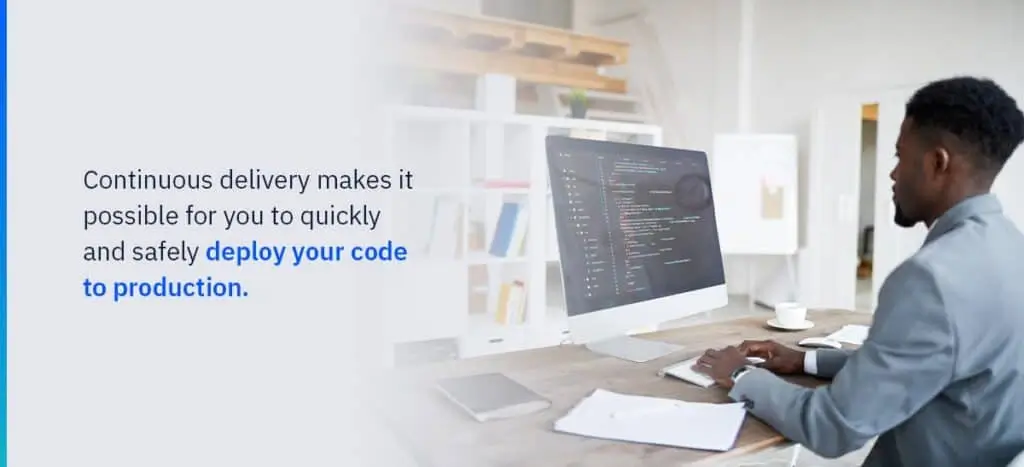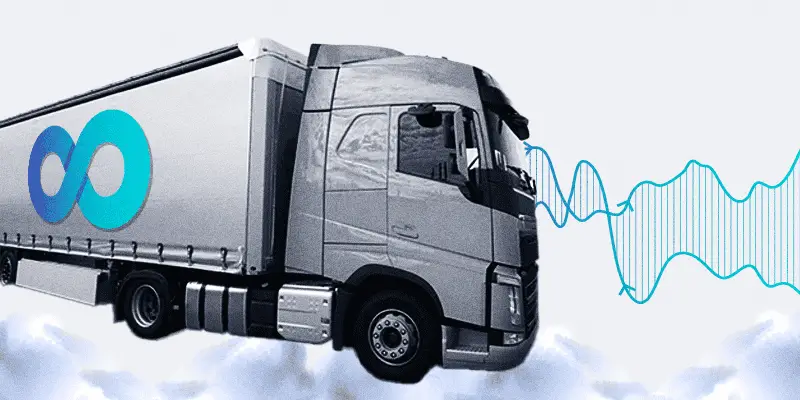DevOps tools and processes all share a similar goal: create a better product in a more streamlined fashion. However, the needs and chosen practices of each DevOps pipeline are going to vary. Your needs are not the same as those of even your direct competitors.
Finding the tools that best address your needs will save you time and provide the greatest results.
Salesforce continuous delivery is one such option for DevOps tooling. It is often combined with continuous integration because their automated processes work so well together. However, continuous delivery performs many of the same functions as continuous deployment, but they provide very different results.
Continuous delivery is the process to get all types of changes—features, configurations, bug fixes—into production at any time with the correct approvals. Continuous deployment has a very similar process with one key difference—it removes the approval stage and automates the entire release process to the point of production.
Continuous deployment will help in numerous scenarios—those not bound by regulatory requirements, have well-designed tests for every aspect of the product, and want the absolute fastest release cycles. However, it won’t work for everybody.


What Is Continuous Delivery?
Continuous delivery makes it possible for you to quickly and safely deploy your code to production. The process accomplishes this goal by pushing every change in the code to a staging environment where you can simply send the application over to production when ready. DevOps teams use automation to deliver portions of the software project in controlled, short cycles as part of the delivery pipeline. These incremental changes make for a low-risk development process and provide users with a seamless experience with very little downtime.
The added step of pushing the code to a production like environment distinguishes it from continuous integration. In continuous integration, code might be complete, but that doesn’t necessarily mean that it’s ready for production. The developer may still need to push it to a staging environment that simulates the final production conditions.
Continuous Delivery Best Practices
Building a swift, resilient process requires that you implement strict quality control protocols, checks and balances, logging practices, and telemetry-based monitoring solutions. There are several best practices you can implement to achieve these goals in Salesforce and maximize the benefits of continuous delivery on a daily basis:
- Service level objectives: Service level objectives (SLOs) are the parameters necessary for your software project to meet the goals of the project stakeholders. Once you establish these guidelines, it’s far easier to rapidly create a multistage environment with quality gates based on the criteria for performance testing.
- Quality gates: Building a quality gate is a complex but rewarding process. Quality gates pull data from sources like performance tests, integration testing, and observability data to measure it against your SLO criteria. AI assistance makes it easy to pinpoint why a test might not meet the bar and how you can repair it to the highest standard.
- Automation: It’s key for Salesforce continuous delivery to apply automation to every repeatable process. Doing so will eventually allow you to scale as you eliminate repeatable processes from your software development, testing, and deployment phases.
- Observability: It’s vital that you establish end-to-end observability for a cloud-native CD pipeline in Salesforce. This process acts as a safeguard against potential blind spots along the pipeline and encourages teams to monitor metrics, logs, and traces with code-level detail for debugging and troubleshooting.
- Simplicity: Another best practice for continuous delivery in Salesforce is to minimize complexity in the pipeline by streamlining as many tasks as possible.
The Main Benefits of Continuous Delivery
Continuous delivery’s approval stage provides a final checkpoint to verify the validity and accuracy of the DevOps project. So what does a company have to gain from utilizing this powerful tool?
Here are 7 continuous delivery benefits benefits you can expect from integrating with Salesforce:
1. Increased Productivity
Salesforce continuous delivery is an automated process. These functions can be performed manually but it is a painstaking and laborious amount of work. Taking these tasks out of your developers’ hands and addressing them with automation frees your team members up to focus on more pressing matters.
Automated processes that were formerly performed manually allows your team members to take on more beneficial tasks and continue moving projects forward.
A streamlined DevOps pipeline means your team isn’t bogged down by repetitious processes that occupy a lot of their time. Tools like continuous delivery are essential aspects of accomplishing this goal.
2. Reliable Code
Your Salesforce DevOps projects are only as strong as the code that builds them. Improperly structured applications and updates will be full of bugs and security vulnerabilities. The end user experience will be poor, which can create a negative view of your offerings.

Continuous delivery includes testing stages to ensure your DevOps projects have a successful deployment and are error-free when released to the public.
Testing your code is an essential aspect of a successful DevOps pipeline. In fact, there should be multiple levels of testing to make sure nothing slips through undetected. Salesforce continuous delivery provides thorough testing of your application to highlight any potential disruptions in functionality.
3. Reduces Errors
Humans make mistakes. This is an undeniable part of life, and that includes all manual processes within the DevOps pipeline. Automated processes that are properly configured will be much less likely to make simple errors that can create large issues further down the line.
Compiling, testing, and delivering new updates into production can be an error-prone process when performed manually.
This process can involve a lot of repeated movements and a high necessity of attention to detail. Even the most talented members of your team are liable to make mistakes. Automated processes like continuous delivery don’t make these mistakes. The result is a more reliable application produced in a shorter amount of time.
4. Better Experience for Team Members
Developing new applications and updates can be a challenging yet rewarding experience for software developers. Other members of your DevOps team likely enjoy many aspects of their positions. There’s a reason these folks got into this line of work, after all. However, there are going to be tasks that are necessary, but not exactly fun.
Automating repetitive tasks allows your team members to remain engaged in the more exciting aspects of their positions.
Creating a better work atmosphere makes your team members happier. And happier employees tend to stay with a company longer than those who become disillusioned. This is a positive aspect that will also attract higher quality applicants when it comes time to grow your team.
5. Increases ROI
Instituting DevOps tools like continuous integration should be a multi-departmental decision. Is it the best option for your business? How will it impact the profitability of the pipeline? These considerations are easily addressed with continuous delivery as it has the capacity to provide a reduction in cost in multiple ways.

Continuous delivery reduces complexity with automation while also reducing the cost of fixing errors in applications by finding them earlier.
Errors in the code of an application become more expensive to fix the later they are found in the process. This stage is your last opportunity to find and rectify these errors before they go into production when the cost of fixing them skyrockets.
6. Faster Release Velocity
Everybody wants to be the first to market with new services, functions, and technology. However, only those with the fastest DevOps pipelines can accomplish this. Many might sacrifice quality to achieve the desired speed, but continuous delivery enables a faster release cycle without sacrificing the quality of the eventual release.
Automating important aspects of the DevOps pipeline enables your team to produce multiple smaller updates with a higher frequency.
Increasing your release velocity allows you to address the needs of your end users with urgency. This positions you as an authority in your industry and garners consumer trust.
7. Improved End User Experience
The goal of every DevOps project is to create a product that improves the experience of someone down the line. This could come in the form of a tool that enables team members to better serve customers, or a product that directly impacts the customers themselves. Either way, you need these updates and applications to function exactly as they were intended.
A reduction of errors and timely delivery creates a much better experience for your customers.
Salesforce continuous delivery creates stronger products that arrive in the market much faster. And while every DevOps tool isn’t right for every company, you just have to ask yourself if you’d like to see the benefits stated above in your own DevOps pipeline.
